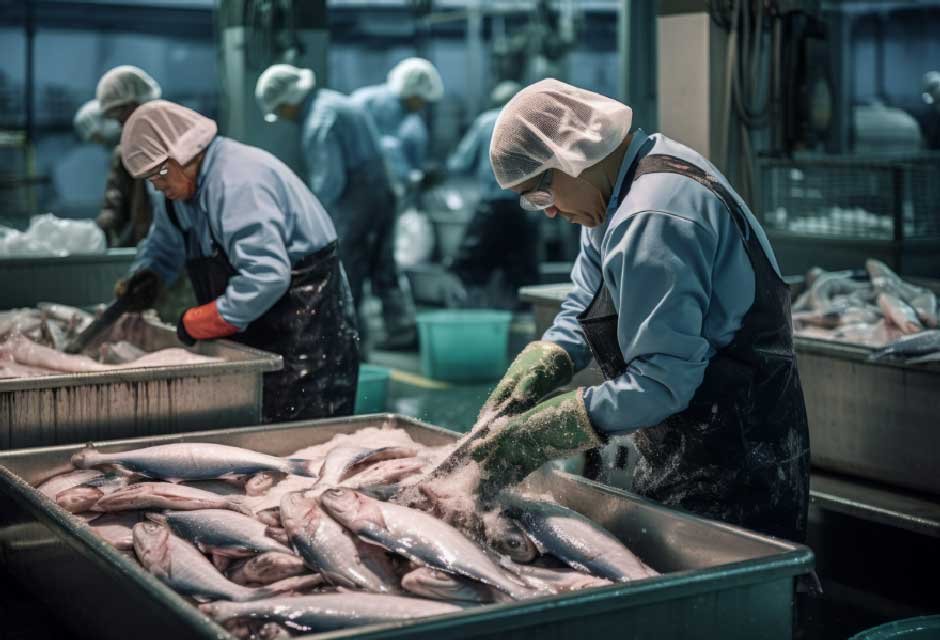Skip to the good bit
ToggleSeafood processing is one of the most essential sectors in the food industry, localized and tailored to the needs of consumers, preparing a more enjoyable and safer experience of freshly caught seafood. Quality processing systems can maintain quality as well as demand. In this post, we look at how end-to-end solutions can optimize these operations.
Streamlining Operations
The management team is responsible for driving efficient seafood processing. Each step, from sorting to packaging, needs to be well-timed. Complete processing solutions can align the various tasks with an integrated approach to ensure efficiency and effectiveness. Such integration helps reduce errors and delays and maintains a smoother workflow.
Automation is a key component. Automated systems can be integrated to improve efficiency while maintaining consistency. Widespread automation machines execute repetitive and straightforward tasks precisely so that human workers can spend more time on complex tasks. This delegation saves time and reduces the chance of human error. Many processors adopt complete seafood processing solutions to handle production planning and traceability.
Quality Control and Safety
The safety of seafood products is a top priority. The overall processing solutions include advanced generations of quality control steps. To maintain safety standards, these systems monitor every action involved in the process, from the initial fish catching to the final production.,
With new technology, everything can be monitored and tracked in real time. Sensors and software collaborate to find anomalies, such as temperature changes or contamination dangers. Detecting issues early allows businesses to avoid potential safety threats, safeguarding their consumers and brand.
Cost Efficiency
Cutting costs is the first thing on any business’s agenda. Cost-effective solutions: Complete processing solutions deliver cost reductions by reducing wastage and maximizing resource utilization. They are automated to guarantee accurate portioning and packaging, which reduces the use of excess materials.
Energy efficiency is another consideration. Modern systems have a lower electrical demand, which reduces your monthly energy bill. Similarly, a streamlined workflow can reduce labor costs through a reduced workforce to handle the process. You can reinvest those savings into different parts of your business.
Sustainability and Environmental Impact
Sustainability is becoming increasingly relevant in seafood processing. Integrated solutions address wastage and energy consumption, aiding in environmental conservation. Businesses can achieve a greener or more sustainable operation through optimized resource utilization.
Also included among these solutions are options for eco-friendly packaging. Sustainable materials allow for monitoring, enabling companies to reduce their carbon footprint significantly. This approach both helps the environment and attracts green consumers.
Enhancing Product Quality
Product quality is the central issue in fish and seafood processing. End-to-end processes allow products to be controlled throughout the process, ensuring the best quality. They are managed by temperature, humidity, and storage.
They also permit customization, which makes it easier for businesses to accommodate particular consumer preferences. Customizing products through offering cuts or value-added products increases market appeal and consumer satisfaction.
Training and Support
Proper training and hand-holding are essential for the deployment of new processing solutions. Most manufacturers offering these systems train people properly, ensuring employees can use the machinery effectively and safely.
Ongoing support is equally important. Technical assistance can be accessed to trace issues, resolve them, and minimize downtime quickly. This support system helps keep the processing systems running over time.
Conclusion
There are many benefits of complete seafood processing solutions. They offer a holistic solution for seafood processing through optimizing operations, improving quality control, and lowering costs. They also focus on sustainability and high-quality products, aligning with contemporary consumer needs.
Investing in such solutions will revolutionize a business with improved efficiency and profits. With seafood demand expected to grow, the industry must adopt these technologies to remain competitive. The end of the sector is not around the corner, and with the right tools, businesses will have a long-term perspective.







